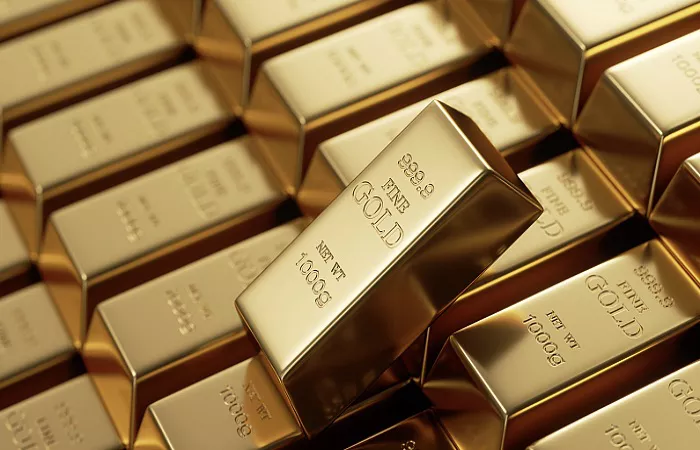The precious metal’s rally has been largely fueled by escalating global tensions, particularly trade disputes involving the United States. The new U.S. administration’s aggressive tariff measures against China and key allies have heightened fears of economic slowdown and deflation, prompting investors to seek safety in gold.
Recent diplomatic developments, however, have offered cautious optimism. The U.S. and United Kingdom reached a preliminary deal to ease tariffs in selected sectors, while informal U.S.-China trade discussions have resumed, raising the possibility of broader negotiations later this year. Nevertheless, markets remain wary, as any lasting resolution appears distant.
Economic Jitters Add Momentum to Gold Demand
Beyond trade friction, concerns over the health of the U.S. economy have intensified. While the labor market remains relatively stable—with unemployment hovering around 4%—consumer sentiment has sharply deteriorated. The University of Michigan’s Consumer Sentiment Index in April dropped to its second-lowest level on record. At the same time, short-term inflation expectations soared to 6.7%, the highest since the early 1980s, while long-term expectations (5-10 years) hit 4.4%, a level not seen since the 1990s.
This combination of elevated inflation and weak consumer confidence has heightened fears of stagflation, further boosting demand for gold as a hedge.
Central Banks and Investors Drive Demand Surge
The uncertain macroeconomic backdrop has also led to increased physical gold accumulation by central banks and institutional investors. Data from the World Gold Council show that central banks have significantly increased purchases since mid-2022, with China, India, Kazakhstan, and Poland among the most active buyers.
China, in particular, has reduced its exposure to U.S. Treasury securities—from nearly $1.3 trillion in 2015 to around $760 billion at the start of 2025—and is also trimming its holdings of U.S. mortgage-backed securities in favor of gold and alternative currencies.
Poland has emerged as a particularly aggressive buyer, adding 49 tonnes of gold in the first four months of 2025 following a purchase of 89 tonnes in 2024. The move is part of a broader effort to diversify reserves amid persistent inflation and regional geopolitical tensions.
Investment flows into gold-backed exchange-traded funds (ETFs) have also surged. In Q1 2025, ETF inflows nearly equaled half of 2024’s total, reversing the previous year’s outflows. Initially led by North American investors responding to the escalating U.S. trade war, the trend has since broadened. Asian investors—especially from China and India—drove record monthly inflows in April following new U.S. tariffs. Retail demand for physical gold also remains strong, bolstered by cultural preferences and growing economic anxiety in the region.
Correction Risk Looms as Trade Talks Progress
Looking ahead, some easing in trade tensions could temper gold’s bullish momentum. The recent U.S.-UK agreement to lower tariffs on automotive and metal products has slightly cooled investor demand for gold. If broader trade deals materialize, risk appetite may return, prompting a shift toward higher-yielding assets and applying downward pressure on gold prices.
Still, any progress is expected to be gradual. Elevated tariffs remain in place and are already pushing up consumer prices, contributing to inflationary pressures through the second and third quarters of 2025. If companies begin to cut jobs in response to squeezed profit margins, fears of stagflation—or even a deeper downturn—could reemerge, potentially sparking another flight to gold.
Outlook: Broad Range with Upside Risk
Under the current baseline scenario, analysts expect gold to trade within a range of $3,200 to $3,500 per ounce in the coming months. However, if trade talks with China stall or geopolitical tensions intensify, prices could climb further—possibly reaching between $3,700 and $3,900—driven by renewed economic anxiety and safe-haven demand.
Related topics:
- India Surpasses China in Gold Purchases, Buying 51% More in Three Months
- Qilu Bank Enhances Support for Small Businesses with Innovative Financial Tools
- Bitcoin Poised for a Surge Amid Gold’s Delivery Delays, Expert Claims


